Actor and writer Ruth Jones is best known as the co-creator of the popular comedy Gavin & Stacey.
It’s a passion I have to share the wonderful characters in Wales.
Ruth Alexandra Elisabeth Jones MBE is the third of four children born to her mother Hannah, a GP, and her late father Richard, who was a legal executive at the steelworks in Port Talbot. The family lived in the coastal resort of Porthcawl in South Wales while she was growing up.
We were just really blessed…with this massive playground, i.e. the beach and endless adventures…a very happy upbringing
Ruth’s mum and her siblings still live in Porthcawl and she is a frequent visitor to see them. When she was a child, both of Ruth’s grandmothers, known as Big Grandma and Little Nanna, lived nearby and were involved in looking after the children. Ruth never had the opportunity to meet either of her grandfathers as they both died before she was born.
It feels like there’s a missing piece because they’ve been these elusive figures in our family for so long. I would love to know more about my grandfathers, definitely
In the episode of Who Do You Think You Are? Ruth goes to see her mum who still lives in the family home in Porthcawl. Ruth is seen to reflect on her hometown’s similarities to Barry Island, the seaside resort which serves as where Nessa in Gavin & Stacey lives. Viewers of the BBC One genealogy programme see Ruth channel Nessa:
‘I knows the ways of a seaside resort. I won’t talk about Porthcawl, I never go there. It’s a very dark place…and I won’t say why.’
Ruth is keen to find out more about her Grandpa Lyn, her mum’s father. His name was Griffith Llewellyn Jenkin, but he was always known as Lyn, and he died at the age of 39 due to heart complications when Ruth’s mum was just two years old. Ruth and her mother begin by looking at photos of Lyn and also at a picture with Ruth’s grandmother Gweneth.


Hannah explains to her daughter that she knows very little about her father as a result of being so young at the time of his death. What is more Ruth’s grandmother, Gweneth, never really talked about Lyn. What Hannah has is a charming memento that she shows Ruth, the only tangible connection back to her dad that she has. It is a little pair of tartan slippers that her father had brought back from Edinburgh after a trip to watch the rugby in Scotland.
Must be so strange cos I think… Dad was such a huge and important part of our lives…The idea of not having a dad growing up… I can’t even begin to imagine it
Next, in the TV episode, we see Hannah showing Ruth a family bible which has been passed down through the generations from Ruth’s great-great grandfather, David Jenkins. At the front of the bible like many family bibles it includes hand written notes about the family, listing David’s nine children. The second one of these is Ruth’s great grandfather, Griffith, who was born in 1860. Hannah also has an old photograph of nine people that she shows to Ruth who then reads the inscription on the back for the viewers.
It says: ‘Portrait and landscape New Quay, Cardiganshire.’ It makes sense that possibly they could be these people. It’s all a bit of a mystery, isn’t it?
The final piece of information Ruth’s mother has is a baptism record for David in the County of Cardigan for the year 1829. This document divulges the names of Ruth’s great-great-great grandparents where it states that David was the son of Evan and Elinor Jenkins. It also reveals that Evan’s occupation was a “mariner”. Ruth notes the name of the parish, Llanllwchaiarn, and searches online to find out where it is. This turns out to be a community near New Quay.

To discover more about her great-great-great grandfather Evan Jenkins and his life at sea, Ruth goes to New Quay on the west coast of Wales. Here she is able to meet local historian Sue Passmore and together they look at a list of voyages of the ship “Eleanor”. This document notes that Evan was the Mate, the second in command of the vessel. The Eleanor was in the coastal trade making local trips between various Welsh ports such as Swansea, New Quay and Milford. Before railways became widespread, mariners like Evan kept the raw materials and goods of the Industrial Revolution moving. At this time Britain’s coast was dotted with ports big and small and the coastal trade was a vital part of the British economy in the early 19th century.
New Quay had a long tradition for its men to go to sea that stretched back to the origins of the town as a literal ‘new quay’ in 1690. Evan would have begun learning how to crew at an early age, perhaps when he was as young as nine.
The next document that the expert has for Ruth to look at is the “Account of the Voyages of the Elizabeth” dating from 1838. It reveals that Evan Jenkins, now 40 years old, had been promoted to master of the ship. It is also revealed that Captain Jenkins was also the owner of the ship he commanded. The programme explains that a career at sea offered a man an opportunity for social mobility, and by this time Ruth’s great-great-great grandfather had become part of New Quay’s elite residents. Ruth ponders that she may well have inherited her sea legs from Evan, as when she was a girl growing up in Porthcawl she had been a member of the Girls’ Nautical Training Corps. We are also able to find Captain Evan Jenkins in the Merchant Navy Apprentice Lists on TheGenealogist where he is listed as the Master of the Elizabeth in 1844 at the time that he took on an apprentice.

The next document, that Sue shows Ruth, is one from 1846 which records the purchase of a plot of land by Evan Jenkins on Mariners’ Street in New Quay where he would build his house. Ruth and Sue take a walk to where her great-great-great grandfather house should be. The road name has been changed to be known today as Marine Terrace, but Evan’s house still stands. The current owners allow Ruth and the cameras inside.

Being here now, it’s making it more real that my great-great-great-grandfather lived here with his family… sailed out on the sea there on his ship. I feel very connected to him. And what is really lovely is that of course it’s my Mum’s father’s side of the family. I’m so lucky that this is here. So lucky
Looking at the details on a crew list for an 1847 voyage from New Quay to Liverpool, Ruth is sad to see that it lists Captain Evan Jenkins as “dead”. The death certificate reveals that Evan died quite suddenly of apoplexy, in other words he had a stroke.
Access Over a Billion Records
Try a four-month Diamond subscription and we’ll apply a lifetime discount making it just £44.95 (standard price £64.95). You’ll gain access to all of our exclusive record collections and unique search tools (Along with Censuses, BMDs, Wills and more), providing you with the best resources online to discover your family history story.
We’ll also give you a free 12-month subscription to Discover Your Ancestors online magazine (worth £24.99), so you can read more great Family History research articles like this!
Well, I mean I know… none of us is immortal but that’s… I feel like I’d sort of got to know him and now he’s gone.
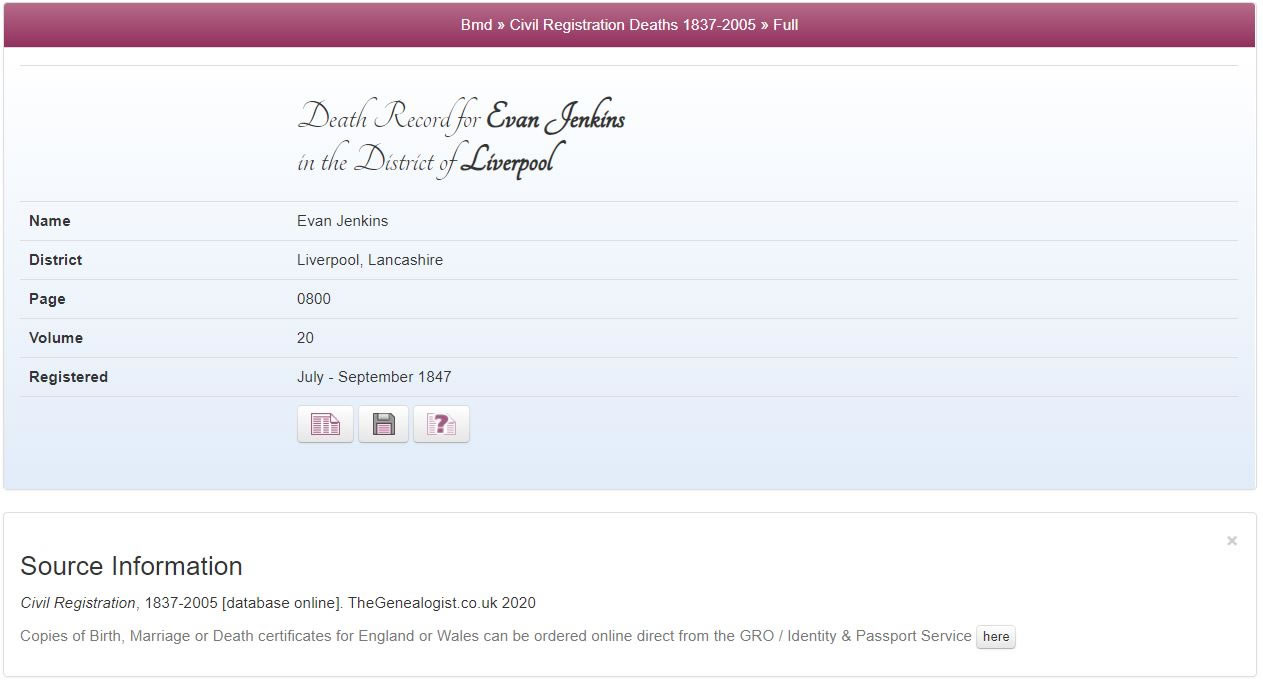
Ruth worries that a seafarer like Evan may have been all alone at his death in Liverpool. Sue, however, is able to point Ruth towards another name on the crew list, it is David Jenkins who was Evan’s 19-year-old son serving on his father’s ship.
There’s something reassuring to know that Evan’s son was with him when he died. And his son was David Jenkins who is my great-great-grandfather. The same David Jenkins that married Hannah and then went on to have those nine children who were all listed in the family Bible… I love joining the dots up like that.
To find out more about her great-great grandfather David Jenkins and his family, Ruth then meets maritime expert Dr Elin Jones. The first document that they look at is the marriage certificate for Ruth’s great-great grandparents, David and Hannah. The marriage was on 1st May 1858 and David is described as a “Master Mariner”.
Fantastic. Good on you, Dave.
Ruth then looks at a copy of the Lloyd’s Captains Register for the years 1874 to 1879. From this she discovers that David had been in command of the Adela S. Hills. David was not only the captain but also a part-owner of the ship, with almost half of the shares in his name. Elin points out the difference between this vessel and that of his fathers this ship was considerably larger than those that his father had sailed and so indicating the progression of the Jenkins family.
Elin explains that the Adela S. Hills had been built in America, and could carry 460 tonnes of cargo. With the maritime expert, Ruth looks at the Adela S. Hills’ trading log for the year 1876. She is taken back by the list of exotic locations the ship had called at such as the East Indies, Burma, Mauritius and the Red Sea. Elin has also found out that David travelled to Western Australia and so it is likely that he was transporting South Wales coal, much in demand by the 1870s to the Antipodes.
Ruth wonders about his family and his nine children while he was away at sea.
Ruth thinks about the group photo her mum showed her, which she now suspects is of her great-great grandfather’s nine children. At New Quay she meets the fashion historian and photo dating expert, Jayne Shrimpton, in the hope of proving this theory. Jayne looks at the photographer’s name on the back of the photo and she explains that this photographer was working in New Quay at the time of the 1881 and 1891 censuses. With this information a time span of when the photo may have been taken is established and further, based on the clothing worn in the image, Jayne can give an estimate that it was taken from 1883 or 1884 approximately. With Jayne’s expert input it now seems most likely that the people in the photo would indeed have been Ruth’s great-grandfather and his siblings. Scrutinising the group in the image Ruth believes that she can identify the oldest of the sisters, Nellie, and of the brothers her great grandfather Griffith.
It dawned on me today that without realising it, I took on the surname of Jenkins in Gavin & Stacey cos Nessa’s full name is Nessa Shanessa Jenkins. I’m a Jenkins too. And I can just imagine she’d have got on very well with Evan, my great-great-great-grandfather and David, my great-great-grandfather. Not sure she’d have got on with Nellie. [In character:] ‘That Nellie, she’s very difficult. I’m not gonna lie.’
Ruth is then able to meet a genealogist, Ellir Ann Daniels, in order to discover what happened next to her new-found family members. Ellir has a newspaper article from May 1892 to show Ruth. It reports the death of Hannah Jenkins from tuberculosis at the age of 25. This Hannah had been Ruth’s great-great aunt and one of the sisters in the family photo. Next, Ruth reads another newspaper report that reveals that Captain Jenkins, of North Parade, received the news of another of his children, the 23-year-old Thomas whose death occurred just four months later in September 1892. Although the funeral service was held in Penace chapel the family grave was in the Anglican Parish Churchyard on the other side of the valley at St David’s Church in Llanarth, the home village of her great-great grandmother Hannah. Ruth visits the churchyard and searches through the headstones for the Jenkins family grave. When she locates it she sees that the family plot contains David and Hannah, Ruth’s great-great grandparents, as well as their children Mary, Hannah, Evan and Lizzie. Thomas, who drowned off Montevideo, is also commemorated on the headstone.
I knew nothing really about my Mum’s father’s side of the family. It’s like as if there was this closed door, which I never thought to open, and now I’ve opened it and gone through and found out all this lovely information about that side of my family.
Parish Records reveal that they died so young
We are able to find the records of these burials by consulting the Welsh Parish Records online at TheGenealogist. These starkly reveal the young ages that some of the siblings in the photo that Ruth had been looking at had died.
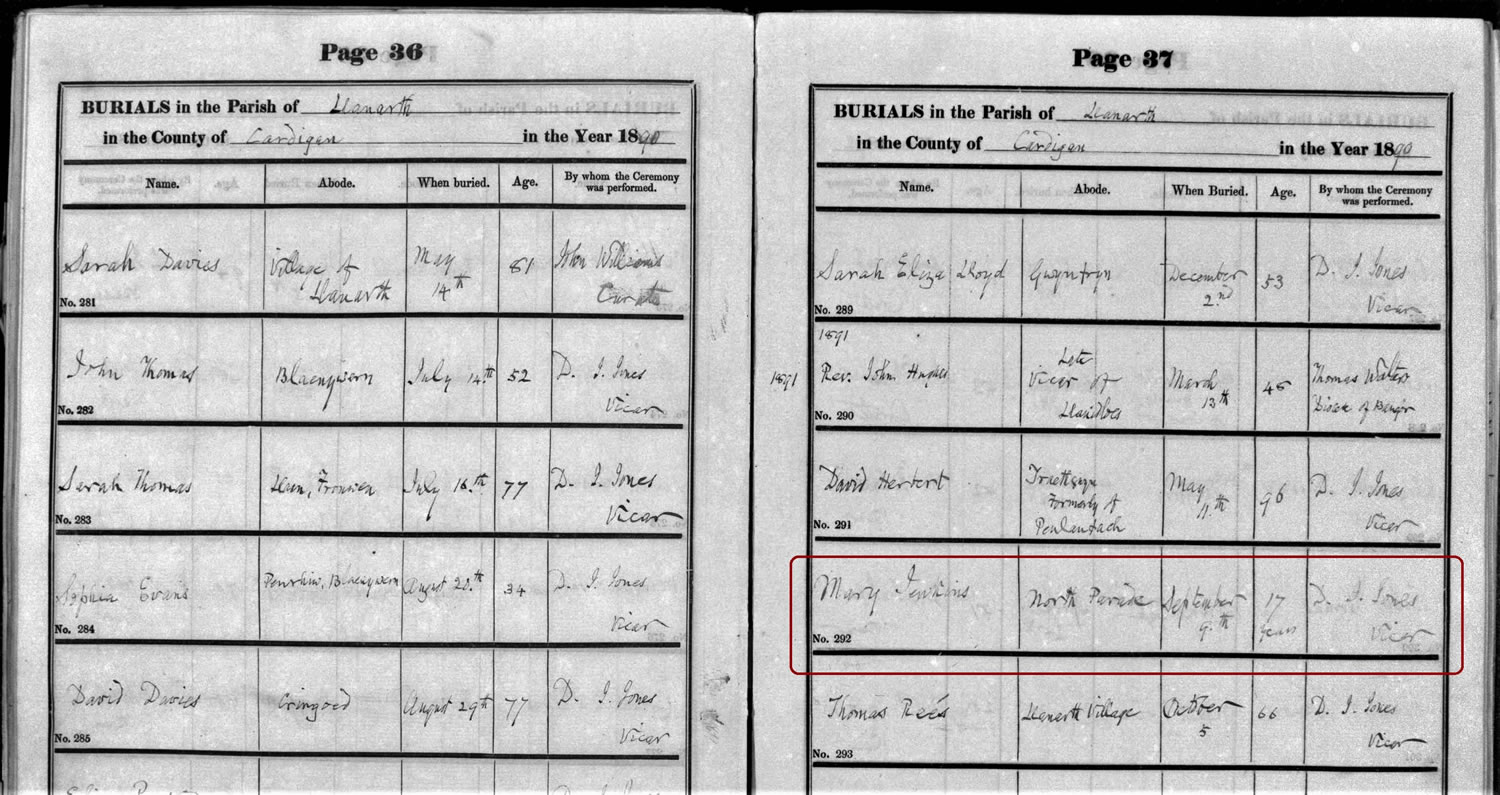
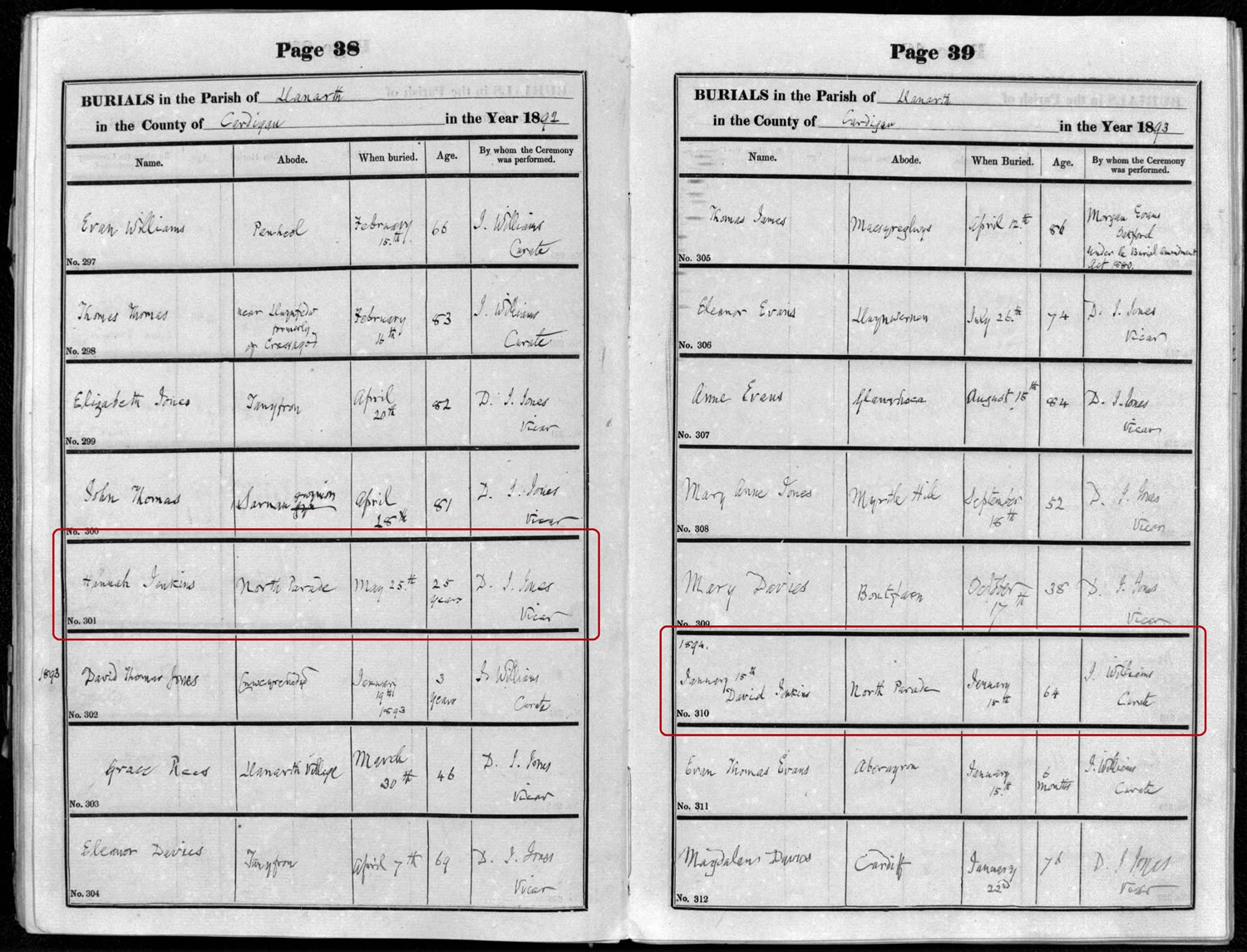

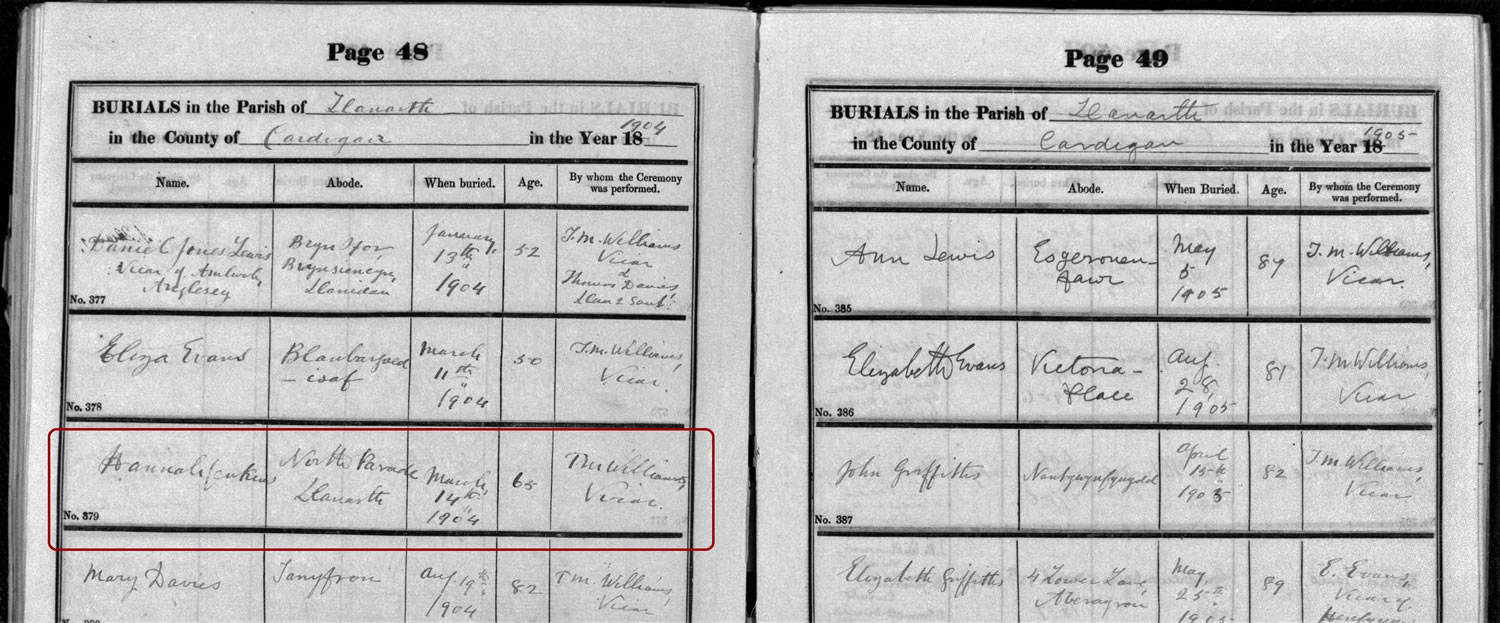
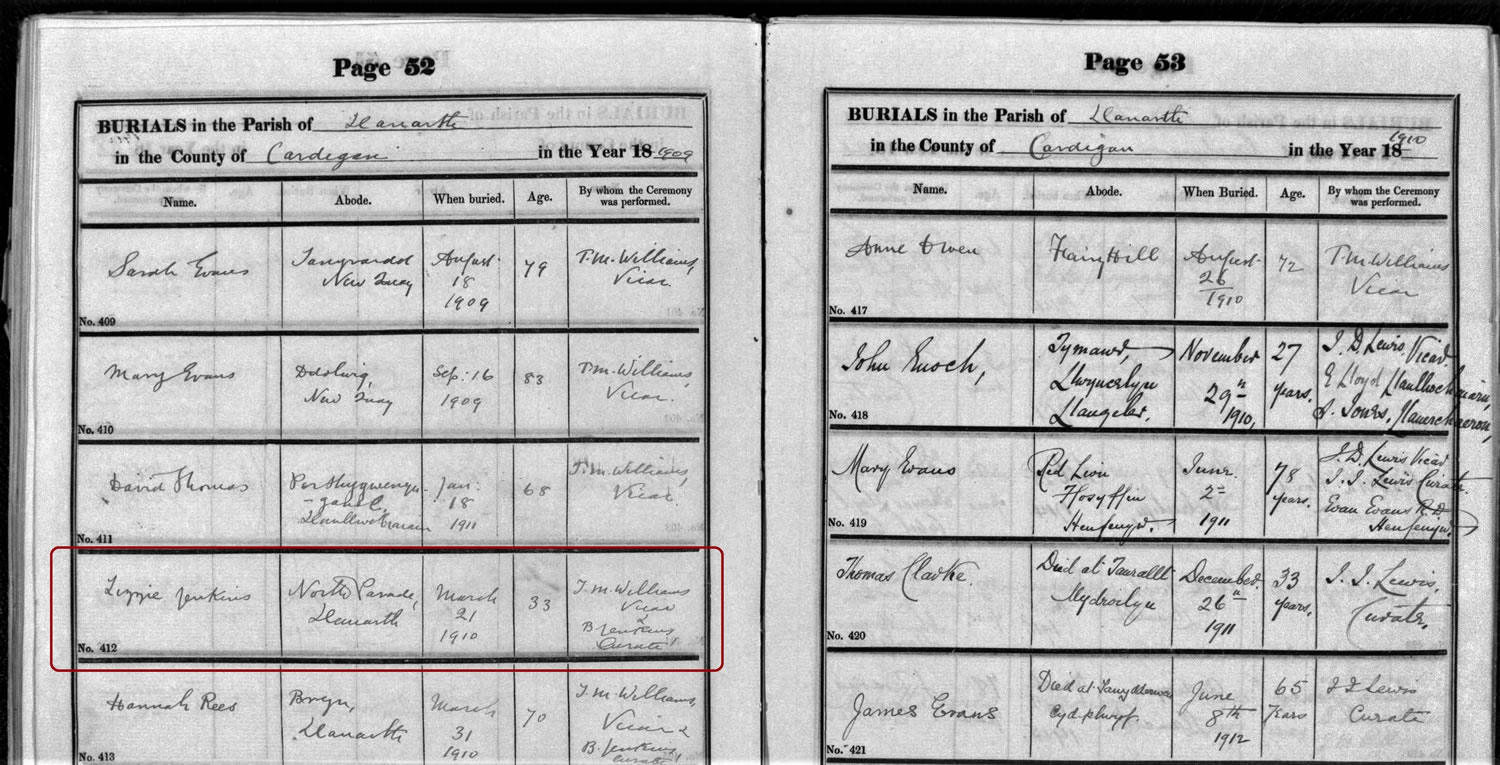
Ruth’s paternal line
Ruth is now eager to find out about her other grandfather that she never knew: her father’s father, Henry Richard Jones. She travels back to Porthcawl, with the film crew, to this time speak to her older brother Julian. Julian has a collection of documents one of which was a copy of Henry’s birth certificate. This reveals that Henry had been born in Neath in 1897 and was the son of a blacksmith.


Henry’s military service record shows that he enlisted towards the end of the First World War in 1917 in the Royal Navy. Before the war he had been working as a chemist’s assistant, and in the Navy he served as a Sick Berth Attendant. Julian gives his sister an old leather satchel that he had found in the family garage. It contains a number of love letters that Henry had written to his future wife, their grandmother Anita.
Access Over a Billion Records
Subscribe to our newsletter, filled with more captivating articles, expert tips, and special offers.
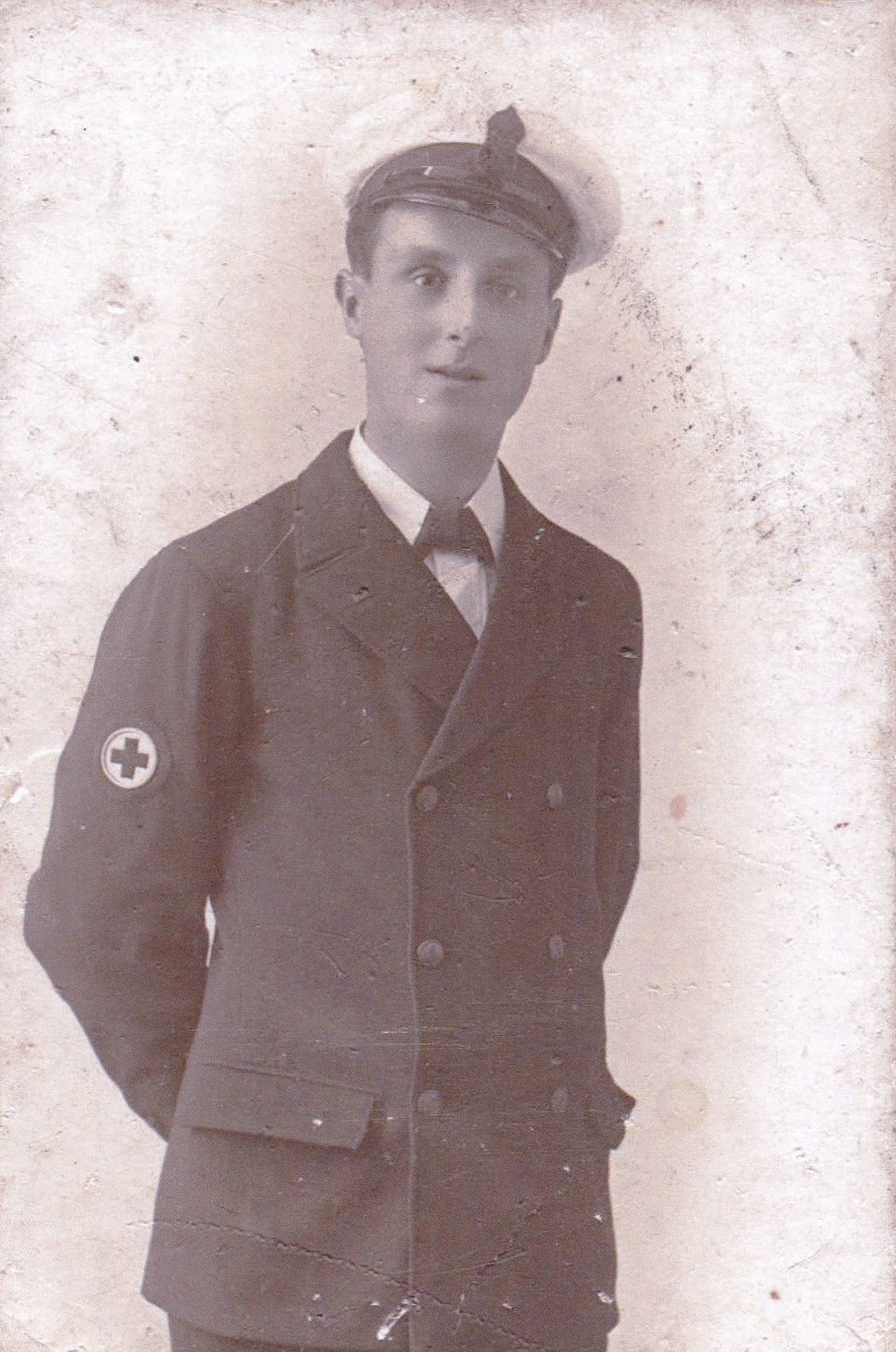
The letters reveal something of their courtship. There is one in which Henry thanks Anita for a photo that she had sent to him, he writes that she is “far prettier in reality”. Ruth is also amused to read about a gift of Maltese lace that Henry had sent to Anita and him becoming hot and bothered thinking of it. Yet another letter mentions the two of them being “asleep in one another’s arms” just a few nights ago.

Then Ruth is drawn to one of the later letters, written after her grandparents married. This is written on headed notepaper from the Neath and District Medical Aid Association and so is a lead that she follows up on. To find out more about her grandad Henry Richard Jones’s occupation, Ruth travels to the address on the letter where she meets historian Dr Steve Thompson. This meeting allows Ruth to learn that her grandfather was responsible for distributing medicine in the town and also held the post of Secretary of the local Medical Aid Society.
This was a time before the NHS had been founded in 1948 and healthcare was expensive and beyond the means of many people. But in South Wales it was different for the people who lived there. By the 1940s Welsh Medical Aid societies had been set up and were providing affordable care for all. Anyone was able to become a member, which would entitle them to receive free treatment should they get ill, in return for paying a small subscription each month. The standard of care was high because so many people joined up.
Steve then reveals that Henry Richard Jones was also the Secretary of the Alliance of South Wales & Monmouthshire Medical Aid Societies. This was an umbrella organisation that represented hundreds of thousands of people across South Wales. In his role as Secretary, Ruth’s grandfather sent letters about health policy to the politicians at Westminster. Even before the Labour government looked at starting the NHS, the Minister of Health in the Conservative led government had, in 1943, been investigating how a post-war healthcare system should be run. Then, after the Second World War, a Labour Government swept into power and its Minister of Health was the Welsh MP Aneurin, or Nye Bevan. He would become known as the father of the NHS. Similar to Ruth’s grandfather, Bevan grew up in South Wales, and had seen first hand how the Medical Aid Societies managed to provide comprehensive care for all their members. A theme that runs through the correspondence between Bevan and Ruth’s grandfather was that there were no plans to include the Societies in setting up the new National Health Service, in fact they were kept at arm’s length by the government. Ruth’s grandfather had wanted the Medical Aid Societies viewpoint to be heard.
I feel very frustrated on behalf of my grandfather because he’s trying his best, isn’t he. And Aneurin Bevan should know better being a fellow Welshman quite frankly
Ruth reads a document regarding a meeting that did eventually take place in January 1946 between Bevan and members of the Welsh Medical Aid Societies. Ruth can see that her grandfather is listed amongst the participants. The minutes of the meeting, however, show that Bevan was still unreceptive to their requests for inclusion in helping to set up the NHS, saying: “You have shown us the way and by your very efficiency you have brought about your own cessation.” Ruth finds it disappointing to see that, back then, her grandfather and his colleagues were disregarded but she is nonetheless proud to hear, in Bevan’s own words, the role that they had played in providing a template for the NHS.
What I do feel excited about in a perhaps slightly shallow way, is that my grandfather knew Aneurin Bevan, which is fantastic. I’m really… really chuffed about that
Steve explains to Ruth that, knowing that their societies were to become redundant and, disappointedly, there was no place for them to be involved in the new provisions, Henry submitted his own CV along with those of his colleagues to the Ministry of Health in the hope of finding employment with the new health service. The CV details his work over the years helping others and even mentions his son, Ruth’s father, studying at University College London. Despite his impressive CV, Henry’s application was unsuccessful which disappoints Ruth. With this knock back her grandfather, instead, took his final job helping to run The Rest, a convalescent home in Porthcawl. Ruth and the cameras return to her hometown to pay a visit to the site of The Rest.
I am a big believer there are reasons behind why stuff happens, you know? If he had got a job with the NHS, he may never have left Neath and moved to Porthcawl. My Dad therefore would not have met my Mum and I wouldn’t be sitting here now!
I am so comforted to find my journey ending where my life pretty much began and where I grew up in this glorious, glorious town of Porthcawl. It’s been wonderful.
Sources:
Press Information from Multitude Media on behalf of the programme makers Wall to Wall Media Ltd
Extra research and record images from TheGenealogist.co.uk
BBC/Wall to Wall Ltd Images
Wikipedia Commons






